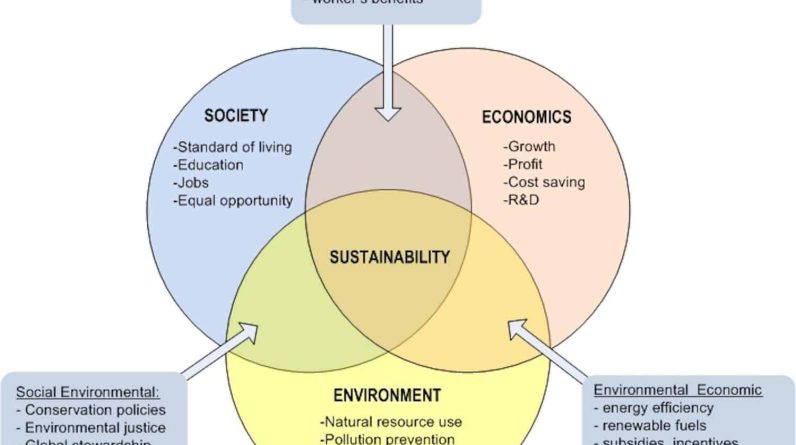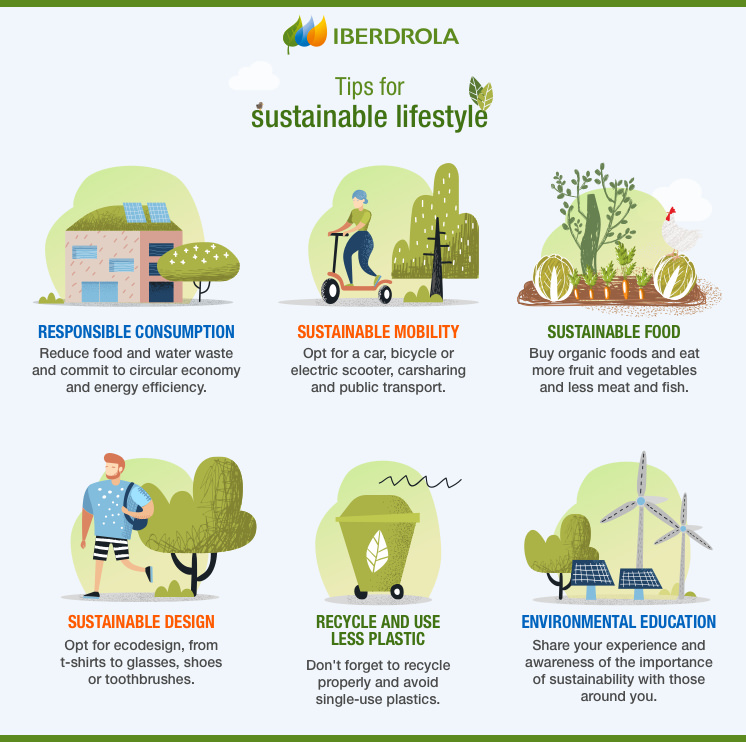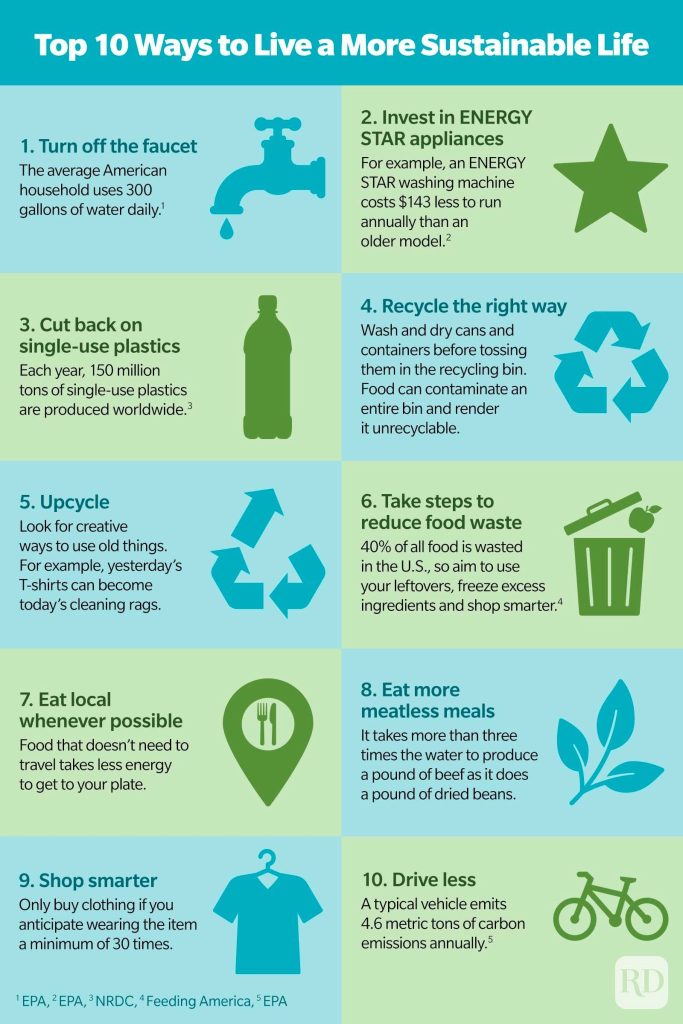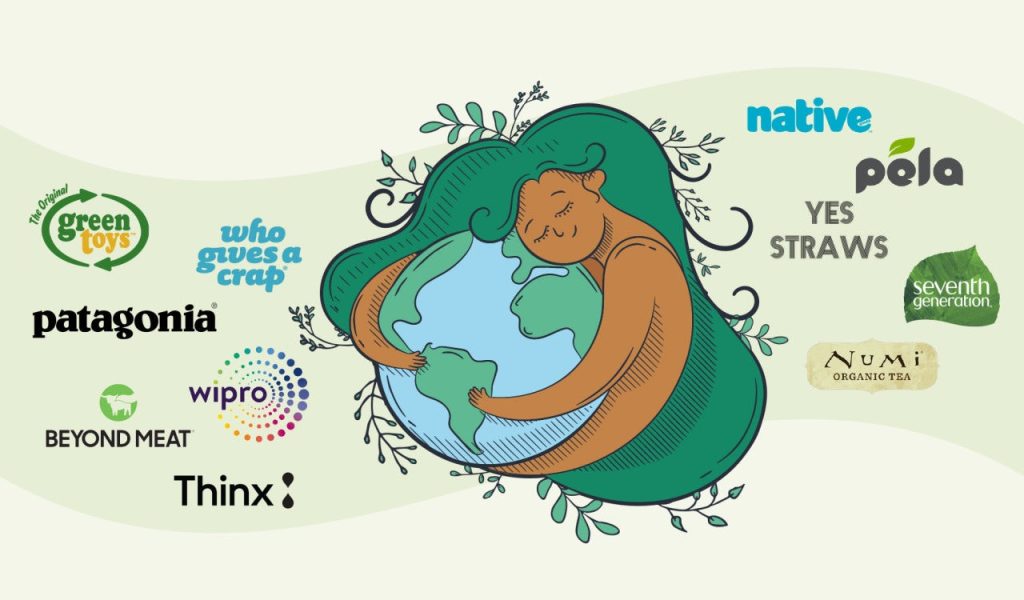
Welcome to Nelly’s Life, where minimalism and veganism converge to create a sustainable and eco-friendly lifestyle that promotes personal transformation and well-being. As a mother, nutritionist, and storyteller, I share my journey from a life burdened by excess and unhappiness to one filled with purpose, joy, and wellness. Through my blog, NellysLife.com, you’ll find personal stories, practical advice, and thought-provoking insights on minimalism and veganism. Join our vibrant community of like-minded individuals seeking intentional and compassionate living, and let me be your guide on this transformative adventure towards a life of simplicity, purpose, and sustainability.

Table of Contents
Minimizing Consumption and Waste
In today’s fast-paced world, it is important to prioritize minimizing consumption and waste in order to promote a sustainable lifestyle. By adopting the principles of reduce, reuse, and recycle, you can make a significant impact on the environment.
Reduce, Reuse, Recycle
One of the simplest ways to minimize consumption and waste is by focusing on reducing, reusing, and recycling. This means being conscious of the items you purchase and using them to their fullest extent. Before buying something new, ask yourself if you really need it or if there is a way to repurpose something you already have. By reducing the amount of waste produced, you can help alleviate the strain on landfills and natural resources.
Adopting a Minimalist Mindset
Minimalism is a growing trend that promotes the idea of living with less. By adopting a minimalist mindset, you can learn to prioritize experiences and relationships over material possessions. This not only helps reduce consumption and waste but also brings a sense of clarity and contentment to your life. Start by decluttering your home and only keeping items that truly bring you joy and serve a purpose.
Avoiding Single-Use Plastics
Single-use plastics have become a major environmental concern, as they often end up in our oceans and harm marine life. By avoiding single-use plastics such as shopping bags, water bottles, and straws, you can significantly reduce your carbon footprint. Instead, opt for reusable alternatives like cloth bags, stainless steel water bottles, and bamboo straws. These small changes can make a big difference in helping to preserve our planet for future generations.
Eco-Friendly Shopping Habits
When it comes to shopping, it is important to support brands and businesses that prioritize sustainability. Look for products that are made from eco-friendly materials, such as organic cotton or recycled materials. Additionally, consider shopping locally to support small businesses and reduce the carbon emissions associated with transportation. By being mindful of your shopping habits, you can contribute to a more sustainable and eco-friendly future.
Renewable Energy Sources
Transitioning to renewable energy sources is crucial in reducing our reliance on fossil fuels and combating climate change. There are several renewable energy sources that can be harnessed to power our homes and communities.
Solar Power
Solar power is one of the most accessible and widely-used forms of renewable energy. By installing solar panels on your roof, you can generate electricity from the sun’s rays. Solar power is not only sustainable but also cost-effective in the long run, as it can help reduce your electricity bills. Additionally, excess solar energy can be stored in batteries or sold back to the grid, further contributing to a greener energy system.
Wind Power
Wind power is another clean and renewable source of energy. Wind turbines convert the kinetic energy of wind into electricity, which can be used to power homes, businesses, and even entire cities. Wind power is abundant in many regions and has the potential to significantly reduce greenhouse gas emissions. Supporting wind energy initiatives and advocating for the expansion of wind farms can be impactful in promoting sustainable energy solutions.
Hydropower
Hydropower, also known as hydroelectric power, harnesses the energy of flowing or falling water to generate electricity. Dams and turbines are used to capture the energy, which is then converted into usable power. Hydropower is a reliable and renewable source of energy that can be generated on both large and small scales. It has the added benefit of providing water storage and flood control. Supporting the development and maintenance of hydropower infrastructure can contribute to a more sustainable energy future.
Conserving Water
Water is a precious resource that is essential for all life on Earth. Conserving water is crucial in ensuring its availability for future generations. By adopting water-saving techniques and implementing water management strategies, we can make a significant impact on water conservation efforts.
Water-Saving Techniques
There are many simple and effective water-saving techniques that can be implemented in our daily lives. Some examples include:
- Fixing leaks promptly to prevent water waste.
- Installing low-flow showerheads and faucets to reduce water usage.
- Collecting and reusing water from activities such as dishwashing and laundry for irrigation.
- Only running the dishwasher and washing machine with full loads to maximize efficiency.
- Watering plants early in the morning or late in the evening to minimize evaporation.
Rainwater Harvesting
Rainwater harvesting is the process of collecting and storing rainwater for later use. This water can be used for various purposes, such as watering plants, flushing toilets, and washing clothes. Rainwater harvesting not only conserves water but also helps reduce strain on municipal water supplies. Installing rain barrels or cisterns to collect rainwater is a simple and effective way to implement this practice at home.
Greywater Recycling
Greywater refers to the relatively clean waste water from activities such as bathing, laundry, and dishwashing. Instead of sending it down the drain, greywater can be recycled and reused for irrigation or flushing toilets. By implementing greywater recycling systems, you can reduce your water usage significantly. However, it is important to follow proper guidelines and take necessary precautions to ensure the safety and quality of recycled greywater.
Promoting Sustainable Transportation
Transportation is a significant contributor to carbon emissions and air pollution. Adopting sustainable transportation methods can help reduce our environmental impact and promote a cleaner and healthier future.
Cycling and Walking
Cycling and walking are not only eco-friendly modes of transportation but also offer health benefits. By choosing these active modes of transportation for short distances, you can reduce your carbon footprint and improve your fitness. Consider investing in a bicycle or using bike-sharing programs in your area. Furthermore, creating pedestrian-friendly communities encourages more walking and leads to vibrant and connected neighborhoods.
Public Transportation
Opting for public transportation over individual car use is a sustainable choice that reduces traffic congestion and lowers emissions. Buses, trains, and trams are more energy-efficient and can accommodate a larger number of people, thereby reducing carbon emissions per passenger. Support initiatives that improve public transportation infrastructure and accessibility, making it a more convenient and viable option for daily commuting.
Car-Sharing and Carpooling
For longer distances or when public transportation is not available or feasible, car-sharing and carpooling can be excellent alternatives to reduce the number of vehicles on the road. Car-sharing programs allow individuals to rent vehicles for short periods, minimizing the need for personal car ownership. Carpooling involves sharing rides with others who are traveling in the same direction, thereby reducing fuel consumption and emissions. Embrace these options to make transportation more sustainable and cost-effective.

Creating Sustainable Homes
Energy consumption in homes contributes significantly to carbon emissions and environmental impact. Creating sustainable homes through energy-efficient practices and thoughtful design choices can help reduce our ecological footprint.
Energy-Efficient Appliances
Choosing energy-efficient appliances is a simple but effective way to reduce energy consumption at home. Look for appliances with high Energy Star ratings, as they are designed to operate more efficiently and use less electricity. Energy-efficient refrigerators, washing machines, and air conditioners can significantly lower your energy bills while minimizing your environmental impact.
Proper Insulation
Proper insulation is essential in maintaining a comfortable indoor temperature and reducing the need for excessive heating or cooling. Well-insulated homes retain heat in the colder months and keep the interior cool during hot summers. This reduces the reliance on artificial heating and cooling systems, leading to energy savings. Insulating walls, ceilings, and floors, as well as sealing any air leaks, can make a significant difference in energy efficiency.
Natural Lighting and Ventilation
Harnessing natural lighting and ventilation not only reduces the need for artificial lighting and air conditioning but also creates a healthy and pleasant living environment. Design your home to maximize natural light by incorporating large windows and skylights. Additionally, proper placement of windows, vents, and airflow systems can facilitate natural ventilation, minimizing the need for mechanical cooling. This promotes energy savings and enhances the overall well-being of occupants.
Eco-Friendly Food Choices
The choices we make regarding our food have a significant impact on the environment. By adopting eco-friendly food choices, we can contribute to a more sustainable and ethical food system.
Adopting a Plant-Based Diet
One of the most impactful ways to reduce your carbon footprint and promote sustainability is by adopting a plant-based diet. Animal agriculture is a major contributor to greenhouse gas emissions, deforestation, and water pollution. By reducing or eliminating the consumption of meat and other animal products, you can play a role in mitigating these environmental issues. Embrace a diet rich in plant-based foods such as fruits, vegetables, legumes, and whole grains to improve your health and protect the planet.
Supporting Local and Organic Agriculture
Supporting local and organic agriculture is another way to promote sustainability in the food industry. By purchasing locally grown produce and supporting local farmers, you reduce the carbon footprint associated with long-distance transportation. Organic farming practices also prioritize the use of natural fertilizers and pest control methods, minimizing the environmental impact. Explore your local farmers’ markets and join community-supported agriculture (CSA) programs to connect with local food sources.
Reducing Food Waste
Food waste is a significant issue that contributes to global greenhouse gas emissions and strains resources. To combat food waste, make a conscious effort to only buy what you need and plan meals accordingly. Properly store perishable items to extend their shelf life, and utilize leftovers creatively to minimize waste. Composting food scraps is an excellent way to divert organic waste from the landfill and create nutrient-rich soil for gardening. By reducing food waste, you can save money and contribute to a more sustainable food system.

Advocating for Sustainable Fashion
The fashion industry is known for its harmful environmental and social impacts. By advocating for sustainable fashion practices, we can work towards a more ethical and eco-friendly industry.
Ethical and Fair Trade Clothing
Choose clothing brands that prioritize ethical and fair trade practices when manufacturing their products. Ethical fashion focuses on ensuring fair wages and safe working conditions for garment workers. Fair trade certification ensures that producers in developing countries receive fair prices for their products. By supporting these brands, you can help improve the lives of workers and promote sustainable production methods.
Secondhand and Vintage Shopping
One of the best ways to reduce the environmental impact of fashion is by shopping secondhand or vintage. Buying pre-loved clothing not only extends the lifespan of garments but also reduces the demand for new production. Thrift stores, consignment shops, and online platforms for secondhand shopping offer a wide range of unique and affordable fashion choices. Embrace the creativity and sustainability of thrifting and enjoy the thrill of finding one-of-a-kind pieces.
Repairing and Upcycling
Repairing and upcycling clothing is an excellent way to extend their lifespan and reduce waste. Instead of discarding damaged items, explore repair options or get creative with upcycling projects. Simple tasks such as sewing a button or patching a hole can breathe new life into your favorite garments. Upcycling involves transforming old or unused items into something new and functional. By embracing these practices, you can reduce your fashion waste and contribute to a more sustainable industry.
Preserving Biodiversity
Preserving biodiversity is crucial in maintaining a healthy and balanced ecosystem. By taking steps to protect natural habitats and support wildlife conservation efforts, we can contribute to the preservation of our planet’s biodiversity.
Protecting Natural Habitats
Habitat destruction is one of the biggest threats to biodiversity. Support organizations and initiatives that work towards protecting natural habitats, such as forests, wetlands, and coral reefs. By advocating for policies that prioritize habitat preservation, you can help ensure the survival of countless plant and animal species. Additionally, consider participating in local community clean-ups and habitat restoration activities to make a tangible impact.
Supporting Wildlife Conservation Efforts
From endangered species to fragile ecosystems, there are numerous wildlife conservation efforts that could benefit from your support. Donate to reputable organizations dedicated to wildlife conservation or volunteer your time to participate in conservation projects. By supporting these initiatives, you contribute to the long-term survival and well-being of threatened species and their habitats.
Planting Native Species
Planting native species in your garden or local green space can have a positive impact on biodiversity. Native plants provide food and shelter for local wildlife, including essential pollinators such as bees and butterflies. They also require less maintenance, as they are adapted to the local climate and soil conditions. Create a wildlife-friendly garden by incorporating native flowers, shrubs, and trees, and provide a sanctuary for biodiversity to thrive.

Educating and Raising Awareness
Educating ourselves and others about sustainability is a critical step in driving positive change. By raising awareness and promoting eco-friendly practices, we can inspire others to embrace a more sustainable lifestyle.
Environmental Education
Promote environmental education in schools and within your community. Encourage the inclusion of sustainability topics in school curricula and support environmental education initiatives. By educating young minds about the importance of sustainability, we can shape the next generation of environmentally conscious citizens.
Community Outreach Programs
Engage with your community by organizing or participating in outreach programs that promote sustainable practices. This can include organizing recycling drives, clean-up initiatives, or educational workshops. By working together as a community, we can achieve greater impact and create a culture of sustainability.
Promoting Eco-Friendly Practices in Schools
Collaborate with schools to promote eco-friendly practices among students and staff. Encourage waste reduction policies, promote recycling programs, and advocate for energy-saving measures in school buildings. By instilling sustainable habits early on, we can create a future generation that actively contributes to a more environmentally friendly world.
Collaborating with Sustainable Organizations
Collaboration with sustainable organizations is an effective way to make a difference on a larger scale. By partnering with environmental NGOs, supporting local sustainability initiatives, and volunteering for green projects, we can amplify our impact and work towards a more sustainable future.
Partnerships with Environmental NGOs
Environmental non-governmental organizations (NGOs) play a crucial role in advocating for sustainability and driving positive change. Partner with these organizations to support their initiatives, contribute to their campaigns, or participate in their events. By pooling resources and knowledge, we can work towards common goals and make a greater impact.
Supporting Local Sustainability Initiatives
Many local communities and organizations have sustainability initiatives in place. Support these efforts by volunteering your time, donating resources, or attending community events. By actively participating in local sustainability initiatives, you can help create a stronger and more sustainable community.
Volunteering for Green Projects
Volunteering for green projects is a meaningful way to contribute to sustainability efforts. Numerous organizations and initiatives rely on volunteers to plant trees, restore natural habitats, organize environmental workshops, and more. Find opportunities that align with your interests and skills, and contribute your time and expertise to making a positive impact.
In conclusion, embracing a sustainable lifestyle is crucial in preserving our planet for future generations. By minimizing consumption and waste, transitioning to renewable energy sources, conserving water, promoting sustainable transportation, creating sustainable homes, adopting eco-friendly food choices, advocating for sustainable fashion, preserving biodiversity, educating and raising awareness, and collaborating with sustainable organizations, we can make a tangible difference in creating a more sustainable world. Start making small changes in your daily life and inspire others to join you on this transformative journey towards a more intentional and compassionate life.


